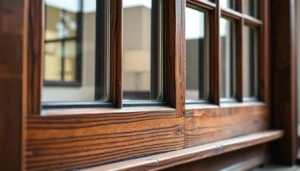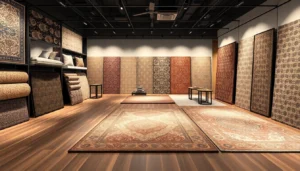Period sash windows are a quintessential feature of British architectural history, embodying both elegance and practical functionality. Their timeless appeal, combined with the ability to restore and adapt them for modern living, makes them a popular choice for period property owners and restoration specialists alike. Understanding their historical development, styles, and maintenance techniques is essential for homeowners, architects, and conservators aiming to preserve the charm of heritage buildings while benefiting from contemporary enhancements. In this comprehensive guide, we delve into the rich history of sash windows, explore various styles, discuss restoration practices, examine material choices, and outline the benefits of installing authentic period sash windows today.
For those considering reinvigorating their period property, exploring period sash windows options provides a pathway to retain architectural integrity while enhancing energy efficiency and comfort. This article offers in-depth insights and practical advice to help you make informed decisions on restoring, maintaining, and installing sash windows that honour historical authenticity.
Understanding the History and Styles of Period Sash Windows
Origins of Sash Windows in Britain
Sash windows have their roots deeply embedded in British architectural history, with origins dating back to the late 17th century. Initially developed from 16th-century predecessors, the modern sash window appeared during the late Stuart era, evolving through the Georgian, Victorian, and Edwardian periods. Their design was driven by both aesthetic appeal and advancements in construction techniques, which allowed for the creation of larger panes of glass and more efficient framing systems.
The earliest sash windows were simple, timber-framed structures with two or more slides; they became a hallmark of elegance and functionality, offering better ventilation and natural light compared to earlier casement designs. Over centuries, the sash window became a symbol of British architectural identity, seen in everything from noble townhouses to humble cottages.
Understanding their historical trajectory is vital when restoring or replicating period sash windows. Authentic restorers pay close attention to construction details, such as mortice and tenon joints, specific glazing patterns, and decorative features that characterize different eras of sash window design.
Different Historical Styles: Georgian, Victorian, Edwardian
The variety of sash window styles reflects their adaptation to different architectural eras and aesthetics. Each style bears distinctive features that help date and authenticate period buildings.
Georgian Sash Windows
Developed in the early 18th century, Georgian sash windows are characterized by their symmetry and proportion. They typically feature two sashes with six panes each (6-over-6), separated by narrow glazing bars. The glazing is often divided into smaller sections to maximize natural light and enhance visual harmony. Georgian sash windows are usually double-hung, with weights and pulleys allowing the sashes to slide smoothly. Their elegant, understated design complements the classical architecture of the period, emphasizing balance and restraint.
Victorian Sash Windows
Victorian sash windows, popular from the mid-19th to early 20th century, are more ornate and varied in design. They often feature taller, slimmer proportions and a larger number of panes, such as 4-over-4 or 8-over-8 configurations, to accommodate the increasing size of rooms and changes in aesthetic preferences. Victorian styles sometimes include decorative features like intricate horns (flush brackets at the sash bottom), beadings, and decorative glazing bars that mimic leaded designs. The use of richer timber species and more elaborate detailing characterizes these windows, aligning with the Victorian penchant for grandeur.
Edwardian Sash Windows
Following the Victorian era, Edwardian sash windows streamlined Victorian designs with cleaner lines and larger panes of glass to maximize light. The typical configuration was a 2-over-2 or 4-over-4, with sash horns often omitted or simplified. The Edwardian style introduced more spacious, less ornate aesthetics, emphasizing functionality and elegance. The use of thinner glazing bars in Edwardian windows created a more refined look, often with larger, floodlit panes, and simplified filleting, reflecting the Edwardian return to classical clarity and restraint.
Identifying Features of Authentic Period Sash Windows
Authentic period sash windows can be identified by several distinctive features that distinguish them from modern reproductions or uPVC variants. Key elements include:
- Timber Frame and Joinery: Solid hardwood or softwood frames with traditional mortice and tenon joints, often hand-finished.
- Glazing Patterns: Multiple small panes with zinc or lead cames, especially in Victorian styles, or larger single panes found in later periods.
- Sash Horns and Decorations: Decorative fillets or horns at the base of sashes, often hand-carved or finely finished.
- Hardware: Traditional weights, pulleys, and lock mechanisms, typically made of brass or iron, with aged patina.
- Glazing and Glass: Unlike modern float glass, period windows often feature hand-blown or crown glass with slight imperfections, adding to authenticity.
Proper identification is essential when restoring period sash windows to ensure historical accuracy and value preservation. Consulting with specialists or conducting detailed inspections can help distinguish true antiques from reproductions or modern substitutes.
Restoring and Maintaining Sash Windows in Period Properties
Best Practices for Restoring Original Wooden Sashes
Restoration of original sash windows requires a careful balance between preserving historical fabric and ensuring functionality. The process generally involves cleaning, repairing, repainting, and reinstalling existing timber components.
Experts recommend starting with a detailed assessment to identify issues such as rot, warped timber, or failed hardware. Essential steps include:
- Stripping the existing paint or finishes carefully to reveal original timber.
- Removing decayed wood and replacing it with matching timber, using traditional joints.
- Cleaning and repairing pulleys, weights, and hardware for smooth operation.
- Re-glazing using appropriate period-appropriate glass or secondary glazing options.
- Applying durable, breathable paints and finishes that protect timber without trapping moisture.
Engaging skilled craftsmen experienced in heritage restoration ensures that each sash window retains its historical integrity and operational lifespan.
Preserving Historical Value During Repairs
Preservation goes beyond physical repairs; it requires respecting the original design, materials, and craftsmanship. To achieve this, property owners should adhere to conservation guidelines and consult with heritage bodies when applicable. Techniques such as matching original paint colors, utilizing traditional joinery methods, and maintaining original hardware help conserve authenticity and increase property value.
Documentation of restoration work, including photographs and detailed records, supports future maintenance and any potential legal or grant applications for listed properties.
Modern Techniques for Draught-proofing & Double Glazing
While preserving period features, modern technology offers solutions to improve energy efficiency without compromising aesthetics. Draught-proofing kits fitted precisely into sash gaps significantly reduce heat loss. These include brush or pile seals, which are discreet and reversible.
Secondary glazing systems are a popular solution for period sash windows, creating an insulated barrier while retaining the original timber frame. Modern double glazing manufactured to replicate traditional aesthetics offers increased thermal comfort, reduced noise, and improved security. When combined with traditional restoration, these techniques help meet contemporary standards for energy efficiency and sustainability.
Choosing the Right Period Sash Windows for Your Home
Materials and Design Options for Period Properties
Choosing materials for period sash windows is critical for maintaining authenticity and ensuring durability. Traditional options include:
- Solid Hardwood: Oak, mahogany, or Sapele provide strength, character, and a classic appearance.
- Softwood: Pine or Western red cedar, often used for cost-effective restoration, can be worked into detailed profiles and finished with traditional paints or stains.
- Composite Materials: Modern composites designed to mimic timber but with enhanced resistance to rot and low maintenance are available, though they may be less authentic.
Design options encompass traditional glazing patterns, decorative glazing bars, sash horn styles, and finish options such as stained, painted, or natural timber look. Customization allows for matching specific period aesthetics with contemporary performance standards.
Customisation & Historical Accuracy
Maintaining historical accuracy involves selecting features true to the original design. This includes choosing authentic hardware, glazing profiles, and detailing. Custom-made sashes can replicate specific period styles, ensuring seamless integration into grade-listed or conservation area properties. Consulting heritage specialists during planning ensures compliance with local regulations and preserves the building’s character.
Regular maintenance and careful selection of finishes help sustain the appearance and structural integrity of period sash windows, adding value and charm to your property.
Cost Considerations and Budget Planning
The cost of period sash windows varies based on size, materials, style complexity, and whether they are bespoke or standard. Traditional timber repairs and installation can range from several thousand pounds per window to more extensive projects exceeding £10,000 for larger or highly detailed sash windows.
While the initial investment may be significant, the long-term benefits—improved energy efficiency, enhanced aesthetic appeal, and increased property value—justify the expense. Budgeting for ongoing maintenance is also important, as well-maintained timber windows can last for generations.
For optimal budget management, obtaining multiple quotes from reputable specialists, exploring government grants or grants for heritage properties, and considering phased restoration projects can make the process more affordable.
Installation & Professional Services for Period Sash Windows
Factors to Consider When Hiring Specialists
Professional installation and restoration require specialists with proven experience in heritage buildings. Essential criteria include:
- Experience and Accreditation: Ensure the company is accredited by heritage or conservation organizations such as FENSA or the Institute of Historic Building Conservation (IHBC).
- References and Portfolio: Request case studies and references for similar projects.
- Technical Expertise: Confirm knowledge of traditional joinery, authentic materials, and conservation standards.
Choosing qualified professionals guarantees that sash windows are correctly tailored to your property’s period and conservation requirements, reducing risks of future issues or compliance failures.
Timing and Installation Process
The installation process typically involves initial survey, detailed planning, fabrication of bespoke sashes, and careful on-site fitting. The timeline depends on complexity, but a standard project may take several weeks. Proper scheduling minimizes disruption and ensures all materials are prepared for a seamless installation.
Key stages include:
- Pre-installation site assessment and measurements
- Fabrication in accordance with specifications
- Removal of old windows, careful handling to preserve surrounding fabric
- Precise fitting of new or restored sashes
- Final adjustments, sealing, and finishing touches
Ensuring Compliance with Conservation Regulations
Period sash windows often fall within conservation areas or are listed structures, making compliance with local planning and conservation authorities mandatory. Engaging specialists familiar with these regulations ensures that modifications or replacements are approved, and that all work respects the building’s heritage status.
Documentation, detailed drawings, and adherence to guidelines set by Historic England or local conservation officers are essential components of a compliant restoration project. This process not only protects the historical significance but also prevents costly legal issues post-installation.
Benefits of Installing Period Sash Windows in Your Home
Enhancing Curb Appeal and Historical Authenticity
Period sash windows significantly boost the aesthetic value of heritage properties. Their characteristic proportions, detailing, and craftsmanship lend authentic charm that is irreplaceable by modern substitutes. Restoring original sash windows or fitting high-quality replicas maintains architectural integrity, increasing visual appeal and reinforcing a property’s historical authenticity.
Homes with period features often attract higher interest from buyers, with potential for increased valuation due to preserved character. They serve as a statement of heritage, craftsmanship, and style that elevates the overall streetscape or residential setting.
Energy Efficiency and Cost Savings
Modern advancements, including draught-proofing, secondary glazing, and energy-efficient glazing, enable period sash windows to meet contemporary standards for thermal comfort. Properly restored and upgraded sash windows help reduce heating bills, decrease carbon footprints, and improve indoor climate stability.
Replacing old single-glazed sashes with double-glazed units that mimic traditional aesthetics is a cost-effective way to achieve insulation without sacrificing authenticity. These improvements, while initially an investment, translate into long-term savings and increased comfort.
Increasing Property Value and Longevity
Authentic period sash windows enhance not only the appearance but also the sustainability of heritage properties. Well-maintained sash windows can last for generations, especially when restored with durable finishes and hardware. Their presence increases the overall property value by elevating aesthetic appeal and meeting modern standards through subtle upgrades.
Investing in high-quality sash windows aligns with future-proofing your home, making it more attractive to prospective buyers and ensuring compliance with future regulations for energy efficiency and conservation.



